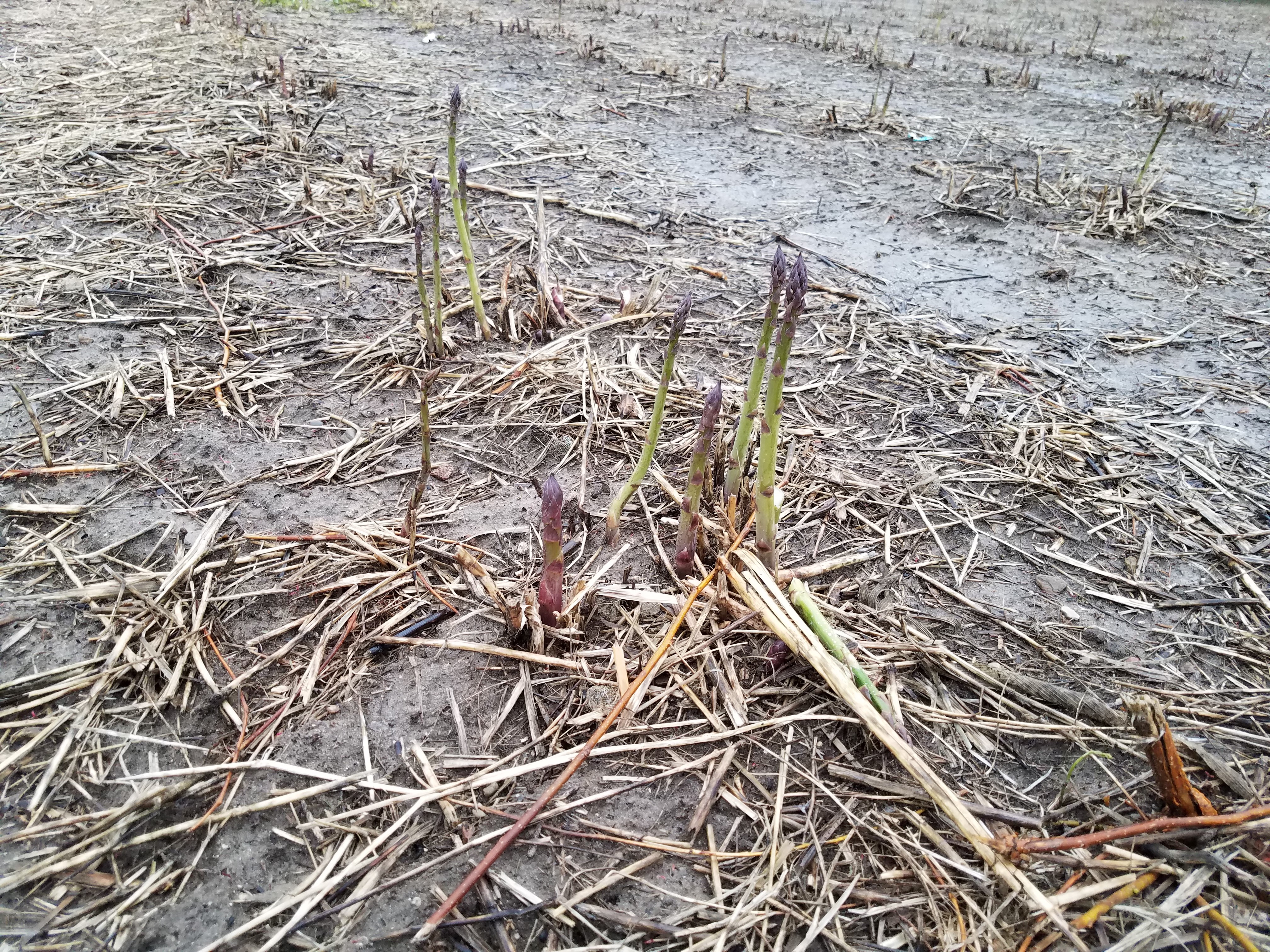Southwest Michigan vegetable update – May 1, 2019
Cool temperatures and rain have brought a stop to most field activity.

Weather
We are at 101 growing degree days (GDD) base 50 degrees Fahrenheit for 2019 compared to 65 GDDs for 2018 and 150 GDDs for the five-year average. We had 1.85 inches of precipitation over the past week. Part of that was a heavy, wet snow on Saturday and into Sunday morning (April 27 and 28). Temperatures, however, did not get low enough to cause damage.
Field activity
The rain has caused field activities to cease and it will take several days for even well-drained sites to be dry enough to resume activity. Unfortunately, there is rain in the forecast for the next two days, which could make the situation worse.
Crop reports

Asparagus harvest did begin over this past weekend but is slow due to cool temperatures. Spears emerge slowly and are darker due to cold temperatures. I have not heard of any damage from the cold over the weekend.
Hops have 14-to-18-inch shoots.
Onion transplants are showing early signs of growth.
Garlic is 16 inches tall.
Early potatoes have been planted, but still no signs of emergence.
Rhubarb is 12 inches tall.
Cabbage, broccoli and cauliflower are being transplanted as conditions permit.
Greenhouses
Cloudy, cool weather presents a problem for transplants and greenhouse-grown crops. Producers need to vent as needed and provide good air circulation. Keeping the relative humidity below 85% is important in controlling botrytis. This is accomplished through raising the temperature if needed, good water application and good air circulation. Damping-off could also be a problem in these conditions. Careful watering is again the best way to keep damping-off under control.



 Print
Print Email
Email

